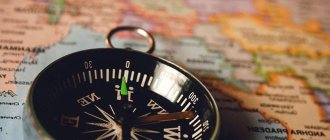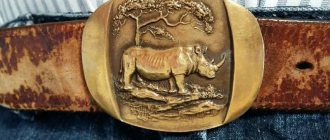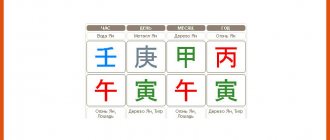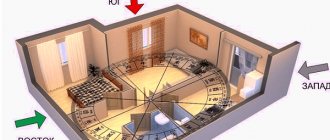Today, not every tourist knows how to use a compass. But in vain! Despite the fact that GPS navigators are understandable, practical and convenient, they have a significant disadvantage: dependence on an energy source. Those. if the battery is discharged, damaged, or the navigator for some reason no longer determines your location, you can only rely on external landmarks (moss, stars, etc.). But it is much better to have with you such an irreplaceable and fairly reliable thing as a compass.
But for someone who does not know how to navigate with a compass, this tool will be useless (unless you are going to start a fire using glass). Therefore, we will provide brief and understandable instructions on how to navigate the terrain using a compass.
Rules for orienteering by compass
A magnetic compass is a box covered with glass. Inside the case there is a circular scale with graduation from 0 to 360°. In the center of the circle is an axis on which the arrow rotates freely. The red end points to the south, the blue to the north.
The zero mark on the scale must be aligned with the north direction. If this is not done, all azimuth measurements will be incorrect. Azimuth is the angle between the direction north and the direction towards the object (clockwise).
When using a compass, you need to move away from metal objects (cars, motorcycles, power lines), and remove iron objects away. Otherwise, the compass will show the wrong direction.
The difficulty of orientation in the forest depends on the terrain. The easiest way to walk is through mountainous, forested areas, as there are rocks and peaks. Rising higher, you can see rivers, city lights, and other landmarks.
If the terrain is flat or slightly hilly, and the forest is dense, you need to often check the compass and choose at least some beacons for movement.
It is most difficult to maintain direction on a cloudy day on flat ground.
It is difficult to move straight through the steppe and tundra overgrown with bushes.
Moving through the forest without a compass, you can end up in the same place you left from. The circumference depends on the step length and is 3-10 km. To prevent this from happening, you should constantly check your compass.
Recommendations for use
A compass is a device that requires testing for serviceability upon purchase. Particular attention should be paid to the speed of needle stabilization. When searching for the north for a relatively long time, it is better to abandon the device.
Having decided on the model, it is important to carefully study the attached instructions and learn how to use it. Further actions:
- Calibrate correctly.
- Practice: use the device in a familiar area.
- If the purchased device is electronic, buy a backup battery.
- When planning a route and determining the duration of a trip, you need to take into account the degree of energy consumption of an electrical appliance.
Important! With prolonged use, some parts of the compass may become slightly deformed. Therefore, it is recommended to periodically check the device for serviceability.











